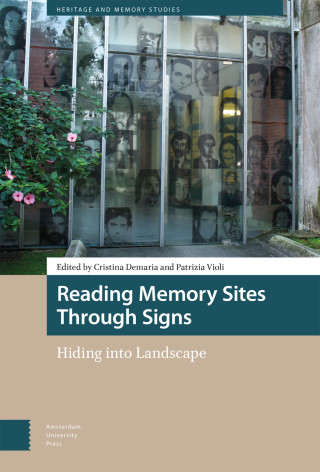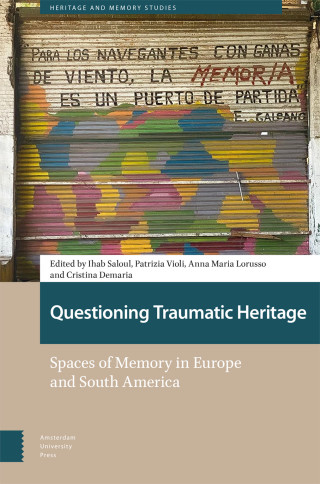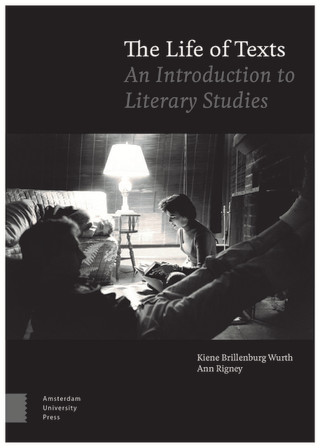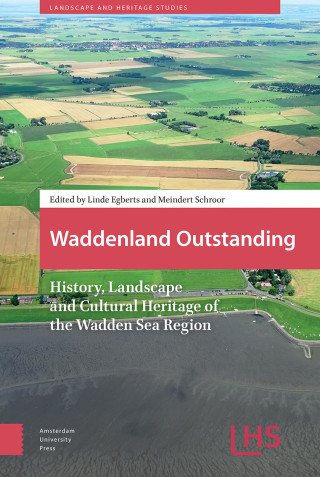
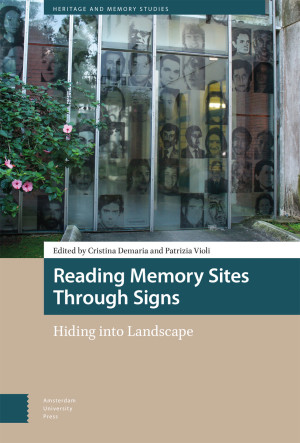
- Titel
- Reading Memory Sites Through Signs
- Subtitel
- Hiding into Landscape
- Redacteuren
- Cristina Demaria
- Patrizia Violi
- Prijs
- € 140,99
- ISBN
- 9789048544301
- Uitvoering
- eBook PDF (Adobe DRM)
- Aantal pagina's
- 322
- Taal
- Engels
- Publicatiedatum
- 18 - 09 - 2023
- Afmetingen
- 15.6 x 23.4 cm
- Partner

- Voorbeeld
- Download introductie
- Ook beschikbaar als
- Hardback - € 141,00
For a Semiotics of Spaces of Memories
Practices of Enunciation and Narratives from Monuments to Global Landscapes of Inheritance (Cristina Demaria and Patrizia Violi)
1 Stories that Shape Spatialities
Lieu and Milieu de Mémoire through the Lens of Narrativity (Daniele Salerno)
2 Interpretation and Use of Memory
How Practices Can Change the Meanings of Monuments (Mario Panico)
3 Uncomfortable Memories of Fascist Italy: The Case of Bigio of Brescia (Anna Maria Lorusso)
4 What Does Fascist Architecture Still Have to Tell Us?
Preservation of Contested Heritage as a Strategy of Re-Enunciation and ‘Voice Remodulation’ (Francesco Mazzucchelli)
5 Berlin, the Jewish Museum and the Holocaust Memorial (Isabella Pezzini)
6 Making Space for Memory
Collective Enunciation in the Provincial Memory Archive of Córdoba, Argentina (Paola Sozzi)
7 Ruins of War
The Green Sea and the Mysterious Island (Gianfranco Marrone)
8 Turning Spaces of Memory into Memoryscapes
Cinema as Counter Monument in Jonathan Perel’s El Predio and Tabula Rasa (Cristina Demaria)
9 Voices from the Past: Memories in a Digital Space.
The Case of AppRecuerdos in Santiago, Chile (Patrizia Violi)
10 500,000 Dirhams in Scandinavia, from Mobile Silver to Land Rent
A Semiotic Analysis ( Manar Hammad)
Index
Index of names
Practices of Enunciation and Narratives from Monuments to Global Landscapes of Inheritance (Cristina Demaria and Patrizia Violi)
1 Stories that Shape Spatialities
Lieu and Milieu de Mémoire through the Lens of Narrativity (Daniele Salerno)
2 Interpretation and Use of Memory
How Practices Can Change the Meanings of Monuments (Mario Panico)
3 Uncomfortable Memories of Fascist Italy: The Case of Bigio of Brescia (Anna Maria Lorusso)
4 What Does Fascist Architecture Still Have to Tell Us?
Preservation of Contested Heritage as a Strategy of Re-Enunciation and ‘Voice Remodulation’ (Francesco Mazzucchelli)
5 Berlin, the Jewish Museum and the Holocaust Memorial (Isabella Pezzini)
6 Making Space for Memory
Collective Enunciation in the Provincial Memory Archive of Córdoba, Argentina (Paola Sozzi)
7 Ruins of War
The Green Sea and the Mysterious Island (Gianfranco Marrone)
8 Turning Spaces of Memory into Memoryscapes
Cinema as Counter Monument in Jonathan Perel’s El Predio and Tabula Rasa (Cristina Demaria)
9 Voices from the Past: Memories in a Digital Space.
The Case of AppRecuerdos in Santiago, Chile (Patrizia Violi)
10 500,000 Dirhams in Scandinavia, from Mobile Silver to Land Rent
A Semiotic Analysis ( Manar Hammad)
Index
Index of names
Cristina Demaria, Patrizia Violi (red.)
Reading Memory Sites Through Signs
Hiding into Landscape
De onderstaande tekst is niet beschikbaar in het Nederlands en wordt in het Engels weergegeven.
What can space tell us about our past? Which stories do memory sites narrate? Which memories do they transmit? And, more importantly, how can we read their meanings? Semiotics can provide us with a homogeneous, shareable and theoretically sound methodology to analyse space within a comparable and common frame of reference for scholars of memory studies and traumatic heritage, as well as for historians, architects and museum curators.
The book describes in clear and understandable language the main semiotic concepts that can be used to analyse space, illustrating them with carefully chosen case studies of memory spaces – monuments, museums, post-war urban restoration, filmed and virtual space – in order to show the applicability and efficacy of a semiotic methodology.
Redacteuren
Cristina Demaria
Cristina Demaria is Professor of Semiotics at the Department of the Arts of the University of Bologna, where she teaches semiotics of conflict, gender studies and semiotics of social sciences. She has worked extensively on traumatic memories and their representation, on visual culture and documentary films, and on gender studies and post-feminism. Her latest publications include Post-Conflict Cultures. A Reader (2021), and Reading Memory Sites Through Signs: Hiding into Landscape (2023).
Patrizia Violi
Patrizia Violi is an Alma Mater Professor at the University of Bologna and the founder of ‘TraMe - Centre for the Semiotic Study of Memory’ at the same university. She was director of the ‘Centro Internazionale di Studi Umberto Eco’ and PI of various European funded projects on trauma and urban space. She has published internationally on the relationship between trauma and memory, with a specific focus on Chile, Argentina and Colombia. Her latest publications include Landscapes of Memory: Trauma, Space, History (2017), and Reading Memory Sites Through Signs: Hiding into Landscape (2023).

